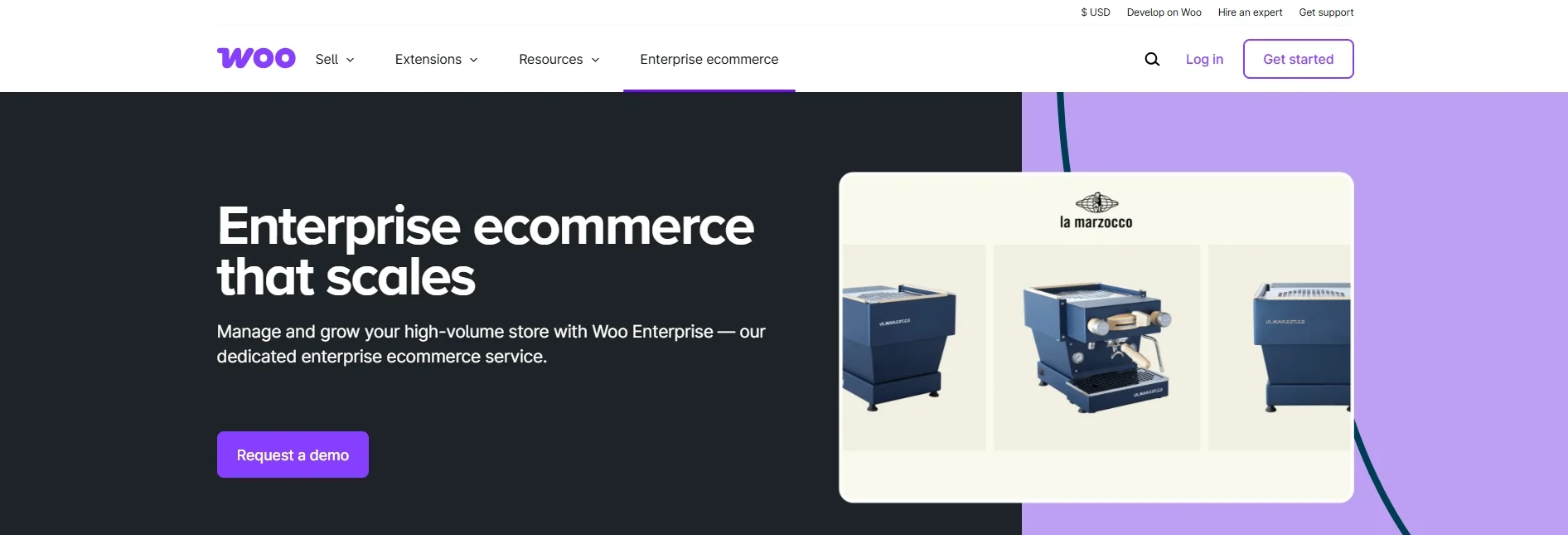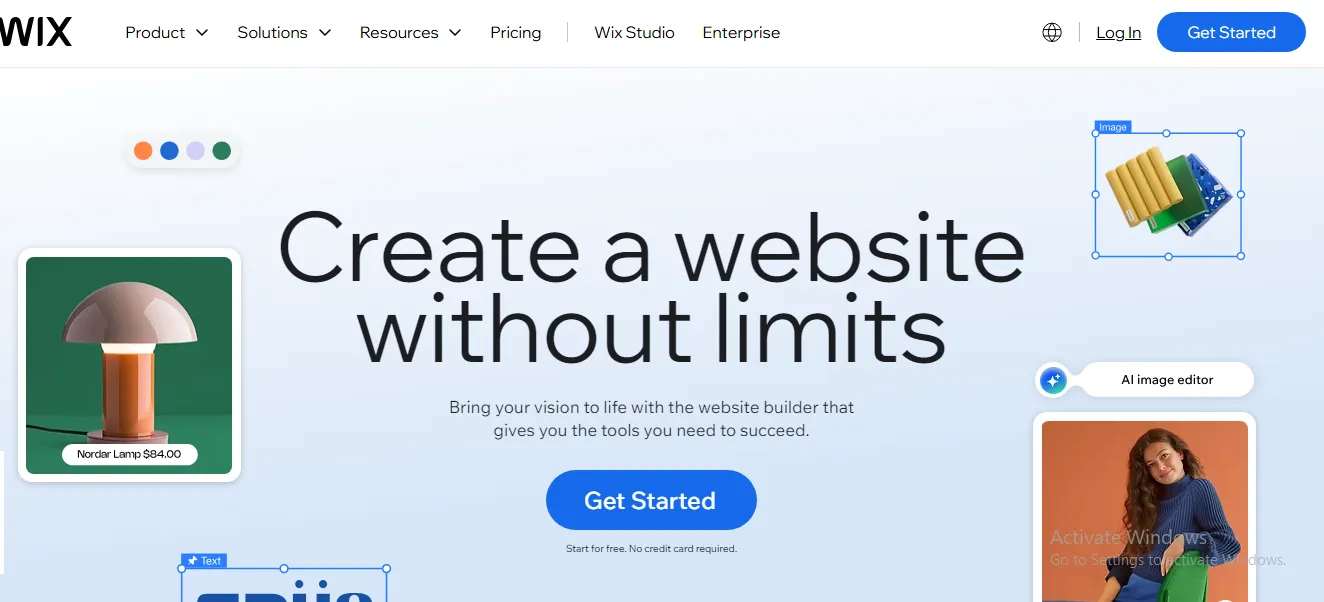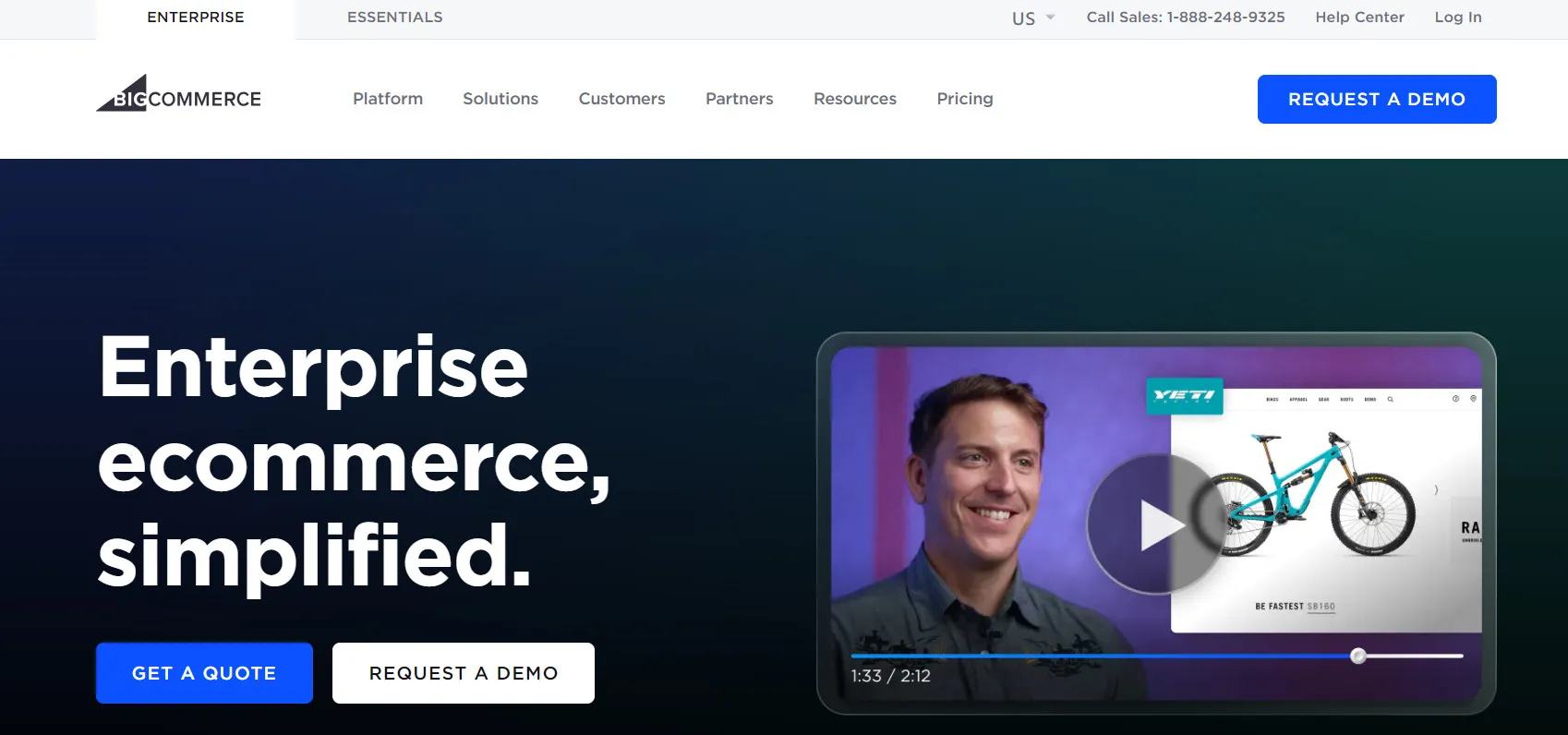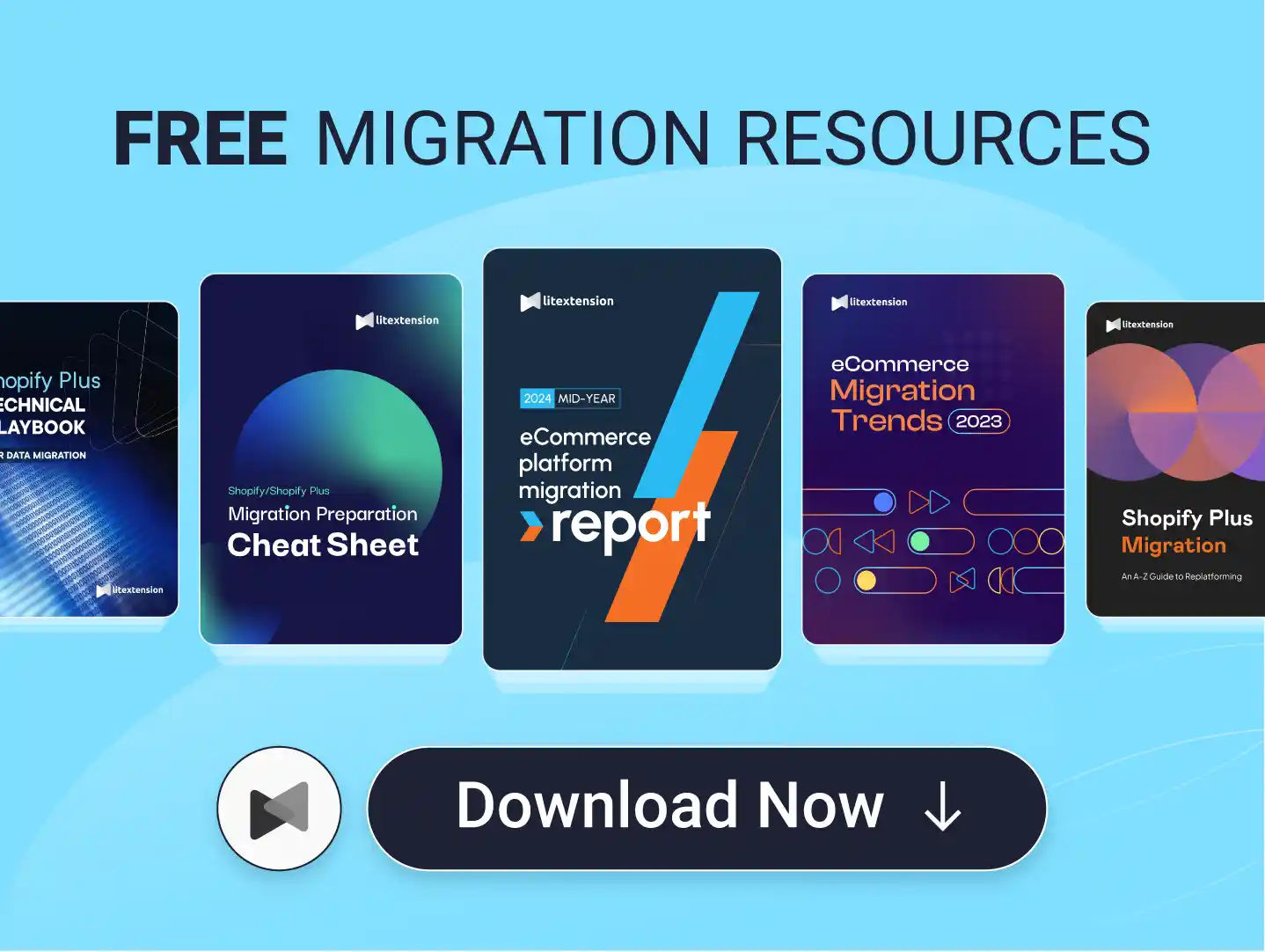When starting a dropshipping business, choosing the best eCommerce platform for dropshipping is one of the most important decisions. It affects everything, from how easily you can set up your store to how well you can manage products and handle orders.
However, with a wide range of options to choose from, you might often get lost along the way. Understanding that, we have compiled a list of the top eCommerce solutions for your dropshipping business, based on our research and experience, to help you make an informed decision.
The best eCommerce platform for dropshipping includes:
- Shopify
- WooCommerce
- Wix
- BigCommerce
- Squarespace
- Square Online
- Ecwid by Lightspeed
- Big Cartel
- Weebly
- TikTok Shop
Keep on reading to discover their features, pros & cons, and everything each platform has to offer. Stay tuned!
Best eCommerce Platforms for Dropshipping – Which Should You Choose
With so many platforms available, the best eCommerce platforms for dropshipping really depends on your business model, technical skill level, and growth ambitions. Each of the ten options we’ve discussed comes with its own strengths and limitations, so it’s worth looking at them side by side before making a decision.
Platform | Best for |
Shopify | Sellers who want an all-rounder: easy to launch, scalable for growth, and app-rich. |
WooCommerce | Merchants seeking full control and flexibility, comfortable with hosting and plugins. |
Wix | Beginners who want a simple, visually appealing store without technical hurdles. |
BigCommerce | Ambitious businesses aiming for fast growth, multi-channel selling, and enterprise features. |
Squarespace | Creative entrepreneurs focused on brand identity, design, and a polished store look. |
Square Online | Businesses already using Square POS or selling both online and in person. |
Ecwid by Lightspeed | Sellers with an existing website or social presence who want to add eCommerce quickly. |
Big Cartel | Independent artists and small creators testing limited product ranges at low cost. |
Weebly | Side hustlers or small shops who need a drag-and-drop builder with basic marketing tools. |
TikTok Shop | Brands targeting Gen Z and Millennials with trendy, visual, or viral-friendly products. |
#1. Shopify
Shopify is one of the most popular eCommerce platforms in the world, and for good reason. We think it's a strong choice for dropshipping, especially if you want a professional online store without having to deal with too many technical tasks. Shopify is designed for ease of use, and it offers powerful tools for both beginners and advanced sellers. In our experience, setting up a store on Shopify is fast, and its clean interface makes daily operations simple.

What we like most about Shopify is that it focuses on performance and flexibility. It supports a wide range of businesses, from small shops to large, growing brands. If you're looking for the best eCommerce platform for dropshipping, Shopify should definitely be on your shortlist.
We have taken a closer look at everything that this platform has to offer in our in-depth Shopify review, so please be sure to check it out!
Pros | Cons |
• User-friendly dashboard that makes managing products, orders, and apps easy. • Huge app store with a wide selection of famous dropshipping tools like DSers, Spocket, and Printful. • Highly scalable platform allowing you to handle thousands of products and hugh transaction volume. • Powerful inventory management features to sync your sales across locations. | • Limited customization unless you have advanced technical skills. • Limited number of free themes. |
Key Shopify features for dropshipping:
- Integration with dropshipping apps: Shopify supports top dropshipping apps like DSers, Oberlo (legacy), Printify, and more. These apps let you import products, manage inventory, and fulfill orders automatically.
- Multiple payment gateways: Shopify supports a wide range of payment options, making checkout smooth for customers.
- Multichannel selling options: This platform allows store owners to sell on various social or marketplace channels such as Amazon, TikTok, and many more.
In our opinion, Shopify is the best eCommerce platform for dropshipping by offering a powerful and balanced setup to launch quickly and scale confidently. It’s a strong all-rounder, and its wide selection of apps gives you the freedom to build the store that fits your exact needs.
#2. WooCommerce
WooCommerce is a powerful WordPress plugin that transforms any website into a full-featured online store. We believe it’s one of the best eCommerce platforms for dropshipping, especially if you want total control over your store’s design and functionality. Unlike fully hosted platforms, WooCommerce gives you the freedom to build your store from the ground up, using the tools and plugins that fit your needs.

In our opinion, WooCommerce stands out because it is open-source and highly customizable. It allows you to build a unique brand experience while keeping costs low. However, since it’s self-hosted, you will need to manage the setup, hosting, and maintenance. For tech-savvy users or those willing to learn, WooCommerce can become the best eCommerce platform for dropshipping in terms of flexibility and long-term growth.
For more information on this platform, please check out our WooCommerce review article to get additional expert insights.
Pros | Cons |
• Free core software that requires no cost to install. • Endless customization with thousands of plugins and themes. • Built-in SEO advantages from being part of WordPress. • Full ownership of your store and data. • No limitations on the number of products and variants. | • Technical setup can be challenging for beginners or non-techie users. • No built-in hosting, so you must choose and manage it separately. • Ongoing updates and plugin management are required. |
Key WooCommerce features for dropshipping:
- Dropshipping plugin support: WooCommerce works seamlessly with top dropshipping plugins like AliDropship, Spocket, and WooDropship. These tools help you import products, automate order fulfillment, and manage suppliers.
- Advanced customization: You can control every detail of your product pages, checkout process, and customer experience.
- Flexible shipping rules: WooCommerce lets you create region-specific shipping options and rates.
To us, WooCommerce is the best eCommerce platform for dropshipping if you want deep customization and full control over your site. It may take more effort upfront, but the long-term flexibility is worth it, especially if you're serious about building a unique, scalable dropshipping business.
#3. Wix
Wix is a website builder known for its simplicity and beautiful design templates. Over the years, it has become a strong option for online sellers, especially those new to eCommerce. We think Wix is one of the best eCommerce platforms for dropshipping if you're looking for an easy and fast way to start selling online without any technical skills. With its drag-and-drop editor, Wix allows you to build a professional-looking store in just a few clicks.

What we like most about Wix is how beginner-friendly it is. You don’t need to worry about coding, hosting, or complicated setup steps. Everything is built into the platform, including tools for product management, payments, and customer support. If you're just getting started and want to test dropshipping with a simple store, Wix could be the best eCommerce platform for dropshipping to begin your journey.
To get more expert insights on this platform, don't forget to check out our Wix review here!
Pros | Cons |
• Very easy to use with a drag-and-drop editor, even for beginners. • Wide selection of mobile-responsive templates, available for free. • Built-in hosting and security, so you don’t need external services. • Integrated app market, including dropshipping tools like Modalyst. | • Limited customization compared to open-source platforms like WooCommerce. • Fewer advanced features for managing large or complex stores. • Slow loading speed as your site scales up. |
Key Wix features for dropshipping:
- Modalyst integration: Wix connects directly with Modalyst, a dropshipping app that helps you source products from trusted suppliers.
- Product automation: Add products, set pricing rules, and manage inventory with ease through built-in tools.
- Simple shipping setup: Configure domestic and international shipping rules from the dashboard.
From our perspective, Wix is the best eCommerce platform for dropshipping if you want to get started quickly and focus on design without dealing with technical hurdles. It’s a great entry point for new sellers who want to test their ideas with confidence and minimal effort.
#4. BigCommerce
BigCommerce is a powerful, all-in-one eCommerce platform designed for businesses that want to grow fast and sell across multiple channels. We see it as a strong competitor for anyone looking for the best eCommerce platform for dropshipping, especially if you're planning to scale your business quickly. Unlike some beginner-focused platforms, BigCommerce comes packed with built-in features, so you don’t need to rely on as many third-party apps.

We appreciate how BigCommerce combines flexibility with enterprise-level performance. It supports multi-channel selling, lets you customize your store, and includes tools for SEO, shipping, and product management. For dropshippers with big goals, BigCommerce might be the best eCommerce platform for dropshipping to support long-term growth and expansion.
If you want to learn more about this platform, please check out our BigCommerce review for expert insights.
Pros | Cons |
• No transaction fees, even on third-party payment gateways. • Multi-channel support, including Amazon, eBay, and social platforms. • Strong SEO tools to help boost your search rankings. • Highly scalable, making it great for growing product catalogs. | • Higher pricing tiers as your revenue grows. • Limited selection of free themes. • Slightly steeper learning curve for beginners. |
Key BigCommerce features for dropshipping:
- App integrations: BigCommerce connects with top dropshipping services like Spocket, Printful, and AliExpress through apps and APIs.
- Multi-storefront support: You can manage multiple brands or stores from a single dashboard.
- Inventory syncing: Keep product availability updated automatically through supplier connections.
- Cross-channel selling: Sell your dropshipped products not just on your website, but across marketplaces like Amazon and Facebook.
From our perspective, BigCommerce is the best eCommerce platform for dropshipping if you’re focused on growing fast and selling across several sales channels. It may not be the simplest tool to master, but its built-in power makes it ideal for ambitious dropshipping businesses.
#5. Squarespace
Squarespace is best known for its stunning design templates and clean, modern interface. While it started as a platform for building content-rich websites, it has steadily added strong eCommerce features. We believe Squarespace can be one of the best eCommerce platforms for dropshipping if your priority is beautiful design, ease of use, and a smooth shopping experience.

What we like about Squarespace is how simple it is to launch a store, even if you’ve never built a website before. Everything is built in: hosting, security, templates, and even basic marketing tools. If you're a creative entrepreneur or small business owner who values visual appeal, Squarespace might be the best eCommerce platform for dropshipping to bring your brand to life online.
We have compiled an in-depth Squarespace review, so please check it out now for more expert tips and insights on this platform.
Pros | Cons |
• Award-winning templates that give your store a professional, polished look. • Beginner-friendly interface with drag-and-drop editing. • Built-in SEO and marketing tools like email campaigns and social sharing. • All-in-one platform with no need for external hosting or security setup. | • Limited dropshipping integrations compared to other platforms. • Less customization flexibility for advanced features and personalization. • Might be slow if you manage a large store |
Key Squarespace features for dropshipping:
- Product management tools: Easily create product pages, manage stock levels, and set up sales or coupons.
- Print-on-demand support: Squarespace integrates with services like Printful and Spocket, allowing you to sell custom products without managing inventory.
- Custom shipping rules: Define flat-rate or region-specific shipping costs to align with your supplier’s methods.
- Built-in analytics: Track visitor behavior, sales performance, and conversion rates without needing extra plugins.
In our opinion, Squarespace is a solid option for dropshippers who want a professional-looking store and a smooth setup process. It may not offer as many integrations as Shopify or WooCommerce, but for design-focused sellers, it still ranks among the best eCommerce platforms for dropshipping in terms of style, simplicity, and brand-building potential.
#6. Square Online
Square Online is the eCommerce solution developed by Square, widely recognized for its payment processing services. As it integrates its financial tools with store-building features, Square Online makes it easy for sellers to manage both online and in-person sales in one place. For dropshippers, this seamless combination of offline and online selling provides an edge, particularly if you also want to test products at physical events or pop-ups!
What makes Square Online the best eCommerce platform for dropshipping is how naturally it integrates with print-on-demand services and supplier networks while keeping payment processing simple. Because the platform is part of the Square ecosystem, order fulfillment and inventory syncing across channels are straightforward.

Pros | Cons |
• Easy to set up, beginner-friendly interface. | • Limited customization compared to advanced platforms. |
Key features for dropshipping:
- Print-on-demand integrations with services like Printful and Printify.
- Built-in payment processing through Square POS.
- Automatic syncing between online store and offline sales.
- Free plan available, with paid tiers unlocking advanced tools.
Square Online is best for sellers already using Square POS or those who plan to combine local selling with dropshipping. Plus, if you’re looking for an all-in-one solution to manage payments and products with minimal complexity, this platform is a natural fit.
#7. Ecwid by Lightspeed
Ecwid by Lightspeed takes a unique approach to eCommerce: instead of forcing you to build a new site, it allows you to add a store to your existing website, blog, or even social media profile. For dropshippers, this flexibility is a major advantage because you can start selling products without overhauling your current site setup.
For many, Ecwid is the best eCommerce platform for dropshipping thanks to its wide integration capabilities. It works with WordPress, Wix, Weebly, and more, and it supports multiple currencies and languages, making it easy to expand internationally. Simply put, for merchants targeting global markets or wanting to embed stores on different channels, Ecwid provides one of the most versatile ways to dropship.
Pros | Cons |
• Seamlessly integrates with existing websites and social media. | • Customization is limited compared to platforms like WooCommerce. |

Key features for dropshipping:
- Works with top dropshipping apps such as Printful and Syncee.
- Embed store widgets directly into websites, blogs, and social platforms.
- Supports global selling with 50+ languages and regional payment methods.
- Mobile app lets you manage orders and products remotely.
Ecwid is best for businesses that already have a strong online presence and simply want to add dropshipping capabilities without rebuilding their site. We highly recommend it for bloggers, content creators, or small businesses selling internationally.
#8. Big Cartel
Big Cartel is designed with independent creators, artists, and small brands in mind. Unlike larger eCommerce platforms, it’s intentionally simple to let users set up stores quickly without technical knowledge. For dropshippers, it’s often chosen to sell niche or handmade-style products, particularly in apparel and print-on-demand.
This platform remains the best eCommerce platform for dropshipping by keeping pricing low and straightforward, with a free plan for very small stores and affordable upgrades. Sure, it doesn’t have the advanced scalability of Shopify or WooCommerce, but its minimalism appeals to dropshippers testing ideas or working within a tight budget.
Pros | Cons |
• Affordable, with a free plan available. | • Limited customization and advanced features. |

Key features for dropshipping:
- Free plan supports up to 5 products; paid plans scale to 500 products.
- Print-on-demand support via integrations with services like Printful.
- Lightweight, clean templates for showcasing products.
- Basic inventory tracking and sales tax automation in paid plans.
Big Cartel is best suited for small-scale dropshippers, artists, and creatives who want an affordable way to sell online. Plus, if your goal is to test a limited catalog or run a boutique-style store, Big Cartel provides an easy entry point.
#9. Weebly
Weebly, which is now part of the Square ecosystem, is a drag-and-drop website builder that also supports eCommerce functionality. For dropshipping, its simplicity makes it an attractive choice for beginners who want to start selling quickly without worrying about coding or hosting.
Weebly stands out as the best eCommerce platform for dropshipping for its beginner-friendly interface and integrated marketing tools, which help new dropshippers manage SEO, email campaigns, and social sharing from within the same dashboard. Furthermore, its low pricing makes it appealing for those launching a side hustle or testing dropshipping.
Pros | Cons |
• Simple drag-and-drop editor ideal for first-time users. | • Limited customization options compared to more advanced platforms. |

Key features for dropshipping:
- Integrates with apps like Spocket and Printful for dropshipping automation.
- Built-in analytics to track store performance.
- Responsive design templates for all devices.
- Marketing tools (SEO, email campaigns, and social media integration).
Weebly is best for beginners who want an affordable and user-friendly way to test dropshipping. It’s a good fit if you value ease of use over advanced customization and plan to keep your business small to medium-sized.
#10. TikTok Shop
Lastly, TikTok Shop merges social media with eCommerce by letting users buy products directly within TikTok. With over a billion monthly active users, it offers dropshippers the chance to showcase products where trends are born and reach a massive audience instantly.
What makes TikTok Shop stand out is its live selling and viral marketing potential. Dropshippers can leverage TikTok’s algorithm to push products into trending content, while live shopping events give sellers a way to engage audiences in real time. All in all, for businesses targeting younger demographics, TikTok Shop offers a unique path to growth.
Pros | Cons |
• Enormous reach thanks to TikTok’s global user base. | • Reliant on TikTok’s algorithms and platform policies. |

Key features for dropshipping:
- Direct integration with print-on-demand tools like Printful.
- In-app checkout for an optimized customer experience.
- Live commerce tools for real-time product showcases.
- Global reach with expansion across Asia, Europe, and the US.
TikTok Shop is best suited for dropshippers targeting Gen Z and Millennials who are active on social media. Additionally, if your business thrives on visual appeal and trend-driven products, this platform can give you unmatched exposure and viral sales opportunities.
Criteria to Choose the Best eCommerce Platform for Dropshipping
When selecting the best eCommerce platform for dropshipping, it's helpful to evaluate your options using clear and weighted criteria. Below, we’ve broken down the most important factors, along with the percentage we believe they should contribute to your final decision.
1. Dropshipping integration – 25%
This is one of the most critical aspects. The platform should connect easily with popular dropshipping tools like DSers, Spocket, or Printful. These integrations automate key processes such as product import, inventory updates, and order fulfillment.
2. Ease of use – 20%
The platform should be simple to navigate, even for beginners. A smooth setup, clear interface, and easy product management can save you hours of frustration. We suggest prioritizing platforms that offer guided onboarding and user-friendly dashboards.
3. Pricing and value – 15%
You need to balance cost with what you’re getting. Look beyond the monthly fee, consider transaction charges, app costs, and upgrade options. We recommend choosing a platform that gives you essential features without forcing you to buy too many add-ons.
4. Customization and flexibility – 15%
The ability to control how your store looks and behaves matters, especially as your brand grows. Some platforms offer more design freedom, while others are more limited but simpler. Think about how much control you want over your store’s design and features.
5. Scalability – 15%
Can the platform handle more orders, more traffic, and more products as your business grows? We’ve found that some platforms start strong but become expensive or limiting at scale. Choose one that supports long-term growth without performance issues.
6. Support and community – 10%
When you hit a snag, support should be fast, helpful, and easy to reach. Also, a strong user community can provide extra value through tutorials, forums, and shared experiences. This becomes even more important when you're managing a business on your own.
Bonus: Tools To Help You Find Dropshipping Suppliers
Before you can start scaling your store on the best eCommerce platform for dropshipping, you need reliable ways to source products and connect with trustworthy suppliers. The right tools below not only save you time but also reduce the risk of stocking poor-quality items:
Spocket
Spocket has quickly earned its reputation as one of the most practical tools for dropshippers, mainly because it connects you with thousands of global suppliers while fitting neatly into popular eCommerce platforms. Instead of spending weeks researching, you can add products to your store in just a few clicks, making it far easier to keep your inventory fresh and competitive.
What makes Spocket even more valuable is how little risk it involves. You can experiment with new product lines without incurring heavy upfront commitments, and for sellers who already have a store up and running, it provides a simple way to expand into new categories. On top of that, Spocket’s access to local suppliers in the US and EU helps you deliver faster shipping times, which is a real advantage over competitors relying only on overseas fulfillment.
Oberlo
For those building a store on Shopify, Oberlo is often the natural next step. Because it was designed specifically for Shopify, the integration is effortless; you can search for products, import them, and sync your inventory with just a few clicks.
Oberlo also broadens your options with its supplier network. Beyond its own curated list, it links directly to Alibaba and AliExpress and gives you access to an enormous range of goods. This combination of convenience and variety makes Oberlo an easy choice for Shopify merchants who want to scale quickly without juggling too many external tools.
AliExpress
If affordability and variety are your priorities, AliExpress is hard to beat. As the retail branch of Alibaba, it offers millions of products across nearly every niche imaginable, with suppliers mostly based in China and India. For dropshippers, this means extremely competitive prices that can significantly boost your margins, especially when compared with local sourcing.
The trade-off, however, is that AliExpress isn’t as beginner-friendly. Its vast catalog can feel overwhelming at first, and integrating it into your store often takes more manual effort than using tools like Spocket or Oberlo. That’s why many dropshippers start with a plugin such as Oberlo for simplicity, then gradually move toward sourcing directly from AliExpress suppliers once they’re more experienced and ready to optimize costs.
Best eCommerce Platforms for Dropshipping – FAQs
Which platform is the best for dropshipping?
From our experience, the best platform depends on your needs. For beginners who want something quick and easy, Wix or Shopify are great choices. If you’re looking for long-term flexibility and full control, we recommend WooCommerce. For larger businesses aiming to scale fast, BigCommerce is a strong option. We believe Shopify offers the best balance of ease, features, and dropshipping support for most users.
Is $100 enough to start dropshipping?
Yes, it can be. We think $100 is enough to test a basic dropshipping store, but if your store scales up, you might need to increase the budget for advanced features and advertisement.
Which payment gateway is best for dropshipping?
We suggest using PayPal and Stripe, they’re widely trusted, easy to set up, and accepted by most platforms. Shopify also offers Shopify Payments, which saves on extra fees. Make sure the platform you choose supports your preferred payment gateway, especially if you're selling internationally. Most of the best eCommerce platforms for dropshipping support multiple gateways, so you can offer flexible payment options to customers.
Is dropshipping on Shopify worth it?
Yes, for many people, it is. Shopify is reliable, scalable, and built with eCommerce in mind. It connects easily with top dropshipping apps like DSers and Spocket, and it includes tools to manage everything from products to payments. While Shopify may be more expensive than some alternatives, we think the convenience and support it offers makes it a great value, especially for beginners who want to start strong.
Can I make $1000 a month with dropshipping?
Yes, it’s entirely possible to earn around $1,000 per month when starting with dropshipping. Many beginners report that figure as a realistic early goal, though success largely depends on solid marketing efforts, product choice, and consistent effort.
Is $500 enough for dropshipping?
Yes, a $500 budget can be enough to launch a basic dropshipping store. It usually covers the essentials like a domain, hosting or platform subscription, and initial marketing.
Final Verdict
To conclude, after reviewing the top platforms, we can confidently say that there is no one-size-fits-all solution. Each option has its strengths, and the best eCommerce platform for dropshipping depends on what matters most to your future strategy.
If you like this article, please don't forget to check out other blogs on our LitExtension website for more expert tips and insights.
🔗 Related Articles:

